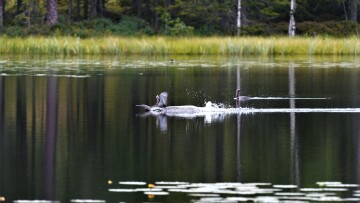The diet of Gavia stellata overwintering in the German Bight, analysed using molecular diagnostics

The diet of red-throated divers (Gavia stellata) overwintering in the German Bight (North Sea) analysed using molecular diagnostics
This article was published in Marine Biology, 166, Article number: 77 (2019) and can be read in fulltext here >> https://link.springer.com/article/10.1007/s00227-019-3523-3
Abstract
In Europe, the German Bight is one of the most important non-breeding areas for protected red-throated divers (Gavia stellata). It is unclear what attracts the birds to this area, especially as the food composition of seabirds outside the breeding season is notoriously difficult to study. To obtain information on prey species composition of red-throated divers in this area, faecal samples from 34 birds caught alive were analysed using DNA metabarcoding. Prey DNA was detected in 85% of the samples with a mean number of 4.2 ± 0.7 taxa per sample (n = 29). Altogether, we found a broad prey spectrum with 19 fish taxa from 13 families dominated by five groups: clupeids, mackerel, gadoids, flatfish and sand lances with clupeids being the most frequently detected prey. Our results indicate that red-throated divers are generalist opportunistic feeders in the German Bight, but pelagic schooling fish that aggregate at frontal zones and have a high energetic value might be favoured. Atlantic mackerel appears to be a more important prey for red-throated divers in this area than previously thought. The precision achievable using metabarcoding has revealed a number of prey species that are consumed by red-throated divers in the German Bight, which helps to explain the selection of this area by divers in winter and spring.
Photo: pixabay.